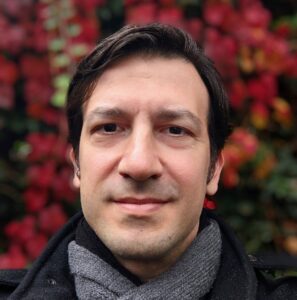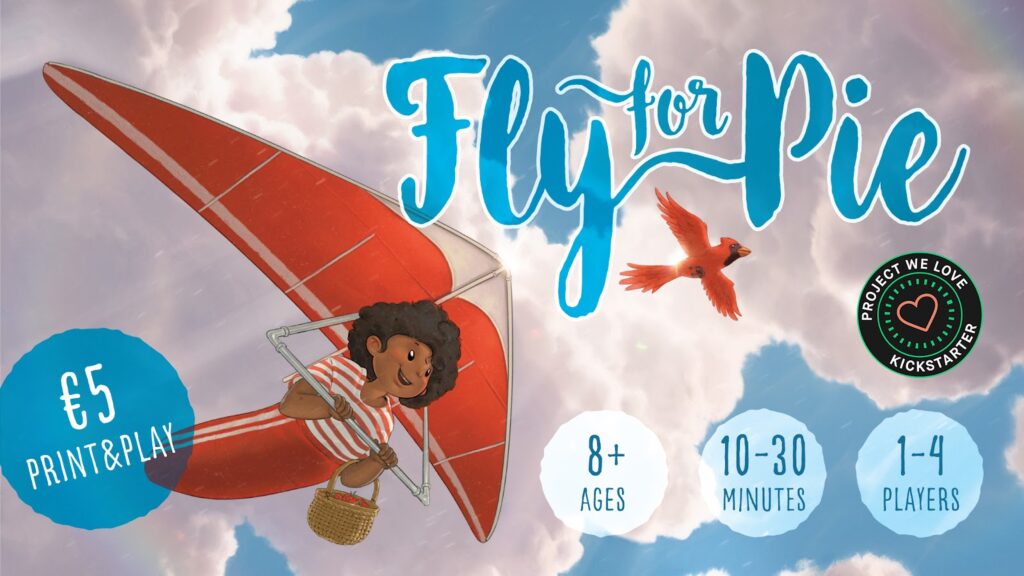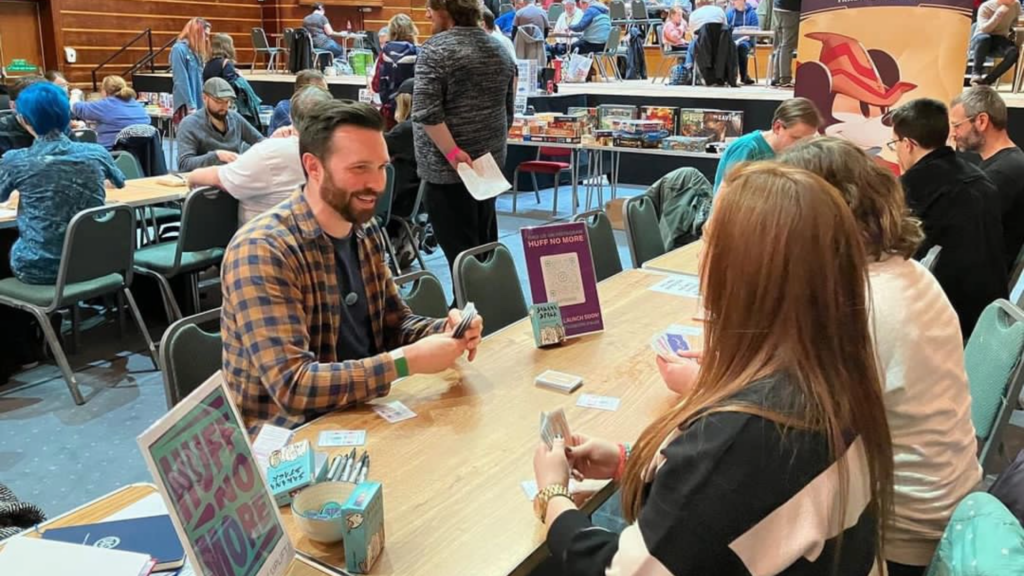Welcome one and all to another What If? blog post. Today I catch up with Derya from Derya’s Games about his recent, wonderfully successful Kickstarter – Fly for Pie. You can find his game here if you’d like to support the project.
Joe: Heya, thanks for coming onto the blog, can you tell us a little about yourself and what brings you to the world of games design?
Derya: My pleasure Joe! I’m an indie board game designer from Turkey with a diverse background in engineering, teaching, and art. In 2018, I got into board game design after realising that games are the best way to learn about something. By combining my varied skills and experiences, I’m aiming to create engaging and meaningful games that convey knowledge, spark imagination, and cater to both families and seasoned gamers alike.

Joe: Wonderful, that’s such a lovely reason for wanting to create games. Your first game Fly for Pie is currently live on Kickstarter. Can you tell us a little about the game? Where did the idea come from?
Derya: I don’t do hang gliding, but I absolutely love it! The idea started with players flying around a map, carried by winds blowing in different directions. But I needed a goal. I decided players would collect something and bring it back, which is how berries entered the scene. From there, Grandma and her pie naturally followed.
Eventually, I had to let go of the wind-blowing mechanic and instead created a weather tracker to bring the theme to life in a more structured way. To add an exciting climax, I introduced a storm as the endgame challenge. And that’s how Fly for Pie was born, a tactical, language-independent game perfect for playing with family and friends, whether they’re casual or heavy gamers. It’s quick to set up, takes just 5 minutes to learn, and offers a mix of set collection, pick-up-and-deliver, and push-your-luck mechanics.
Joe: Love the inspiration! How did you get that game from those initial ideas to something that was ready to fly?
Derya: Everything started with a prototype, just a map and some cubes on it. Through playtesting, I began refining the mechanics, adjusting the map itself, and eventually considering which berries to include. When I added the bird action, I researched berry-eating birds to ensure accuracy. I worked extensively on the mechanics to make them as thematic and intuitive as possible.

After enough playtesting sessions, I began searching for artists and connected with Natasha Orshulevich and Muhammet Feyyaz. This is where my art education proved invaluable for the art direction. Once the artwork was complete, I collaborated with Kaan Aslan on 3D designs, and Deniz Cem Önduygu on graphic design to bring everything together. They all did a great job!
The biggest challenge was launching a campaign on Kickstarter. I say ‘challenge’ because Turkey is not an eligible country. Once I managed to overcome that hurdle, the next step was tackling all the campaign work, most of which I had to handle on my own. In the end, though, I think everything came together nicely.
Joe: That sounds complicated, can you tell us a little bit about the challenges of launching a Kickstarter in Turkey and how you managed to make it work?
Derya: Being an indie board game designer in Turkey comes with many challenges, it’s practically a near-impossible profession. Launching a crowdfunding campaign is just one of those hurdles. To do so, you either need to start a company abroad, which doesn’t make much sense for a print-and-play publisher like me, or collaborate with someone in an eligible country. I chose the latter.
Joe: So you pressed the “go” button for your campaign last week, how did you know you were ready? Was there a follower count you were aiming for? Or any other metrics you were tracking?
Derya: I wasn’t 100% ready because there’s always something new to learn, even after you launch. Unfortunately, I didn’t have much time to promote the campaign beforehand due to the challenges I mentioned earlier. I only had five days after setting up my pre-launch page, so I didn’t have many metrics to track. I relied instead on the support of my friends from around the world and the quality of our work, as the marketing budget of print-and-play games is practically zero.
Joe: I’m so glad you launched and that the game was funded. It looks beautiful.
You funded really quickly and then some. I wonder if you have a sense of where your backers came from and what started that snowball on day 1. I remember you being quite shocked and overwhelmed by it all.
Derya: Thank you Joe! Yes, it was a bit overwhelming, to be honest. You never know what’s going to happen until you hit that launch button. Over the years, I’ve helped many friends in the board game industry, and they showed up on the first day to support me. I cannot thank them enough. There were also backers I had never met before, and then the Kickstarter crowd joined in!

In the grand scheme of Kickstarter campaigns, I’d call it a modest start, but I was absolutely shocked when I received an email from Kickstarter saying my project was selected as a “Project We Love”!
Joe: That’s a really cool badge of honour. Do you have an idea of how many backers the “project we love” badge brought in? Do you get to see those sort of metrics behind the scenes?
Derya: There’s no exact metric for that, but you can track where backers come from, either within Kickstarter or through your referral links. While it’s unclear how many backers the PWL badge specifically brings, it definitely gives the campaign a boost.
Joe: based on your experience of ideation through to Kickstarter can you offer any advice to the community about how they can follow that path too?
Derya: Of course…
To design a game: Play a lot of games, learn about mechanics, set a clear goal, come up with original ideas, and create a prototype as soon as possible.
To develop a game: Playtest extensively with a variety of people at all experience levels. Listen to feedback, refine the mechanics, and streamline the rules to align with your original goal.
To run a campaign: Work with professionals for all aspects of your game’s artwork and graphic design, from the rulebook to the campaign page. Give them creative space and value their experience. Learn from industry experts and support others before asking for help.
Joe: Thanks Derya. Let’s round this out. Once your campaign is over , what’s next, anything else on the way?
Derya: Thanks for having me Joe! I’m already working on the next adventure of the Wondernauts, and a mid-weight, plant-themed game is brewing in the background. 😉
Thanks to Derya for his time and expertise this week. You can find his game Fly for Pie on Kickstarter and you can connect with him on Instagram. Oh, and if you’re feeling like you’d like to subscribe to something today, how about this blog!


